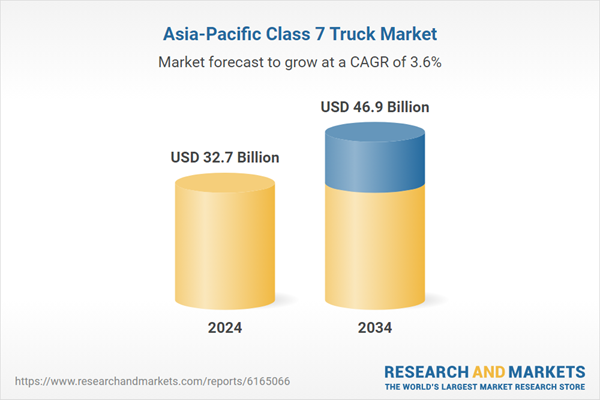The surge in digital transformation following the pandemic pushed operators to adopt advanced technologies, including predictive maintenance and real-time tracking. Smaller enterprises are also embracing digitized fleet services, aided by leasing models and subscription-based ownership structures, particularly in countries across South and Southeast Asia. These developments are making it easier for businesses in construction and logistics to scale operations while managing vehicles more efficiently in a dynamic freight environment.
Diesel-powered Class 7 trucks from the fuel segment held 71.3% share in 2024, and this segment is forecasted to grow at a CAGR of 3.9% through 2034. Diesel remains the fuel of choice due to its widespread availability, cost-effectiveness, and capacity to support high-load and long-distance operations. Favorable infrastructure for diesel distribution across countries like Japan, Australia, and China continues to bolster its use in both urban and rural freight movement. The superior energy density and total cost of ownership advantages contribute to the enduring preference for diesel trucks among large and small fleet operators alike.
Trucks with power output below 300 horsepower held a 39% share in 2024 and will grow at a CAGR of 3.8% between 2025 and 2034. This horsepower range delivers the right balance of fuel efficiency, power, and emissions compliance. It serves as the backbone for transportation within infrastructure development and medium- to long-haul logistics. The segment remains a top choice for operations requiring performance and reliability without compromising operational costs.
China Class 7 Truck Market held a 46.6% share, generating USD 15.3 billion in 2024. Market growth is primarily fueled by ongoing infrastructure development, strong freight demand, and government support for modernization. China’s dominant role is supported by a robust logistics ecosystem and a push toward industrial upgrading, where mid-to-heavy trucks are essential. Regulatory policies are also prompting manufacturers to advance fuel-efficient engines, telematics, and cleaner drivetrain technologies to meet tightening emissions requirements.
Prominent players shaping the Asia-Pacific Class 7 Truck Market include Hino Motors, SHACMAN, Daimler Truck, FAW Jiefang, Hyundai Motor Company, Ashok Leyland, Tata Motors, Volvo Group, Isuzu Motors, and Sinotruk Group. Major OEMs are prioritizing innovation in drivetrain technologies and emissions control systems to align with regional regulations. Many are increasing R&D investment in telematics, fuel efficiency, and lightweight design to stay competitive. To expand market access, companies are forming joint ventures and supply chain partnerships within the region. Flexible financing models, such as leasing and truck-as-a-service (TaaS), are being introduced to attract SME. Some are building localized assembly and service centers to enhance after-sales support and reduce import dependency.
Comprehensive Market Analysis and Forecast
- Industry trends, key growth drivers, challenges, future opportunities, and regulatory landscape
- Competitive landscape with Porter’s Five Forces and PESTEL analysis
- Market size, segmentation, and regional forecasts
- In-depth company profiles, business strategies, financial insights, and SWOT analysis
This product will be delivered within 2-4 business days.
Table of Contents
Companies Mentioned
The key companies profiled in this Asia-Pacific Class 7 Truck market report include:- Daimler Truck
- Dongfeng Motor
- FAW
- FOTON Motor
- Hino Motors
- Isuzu Motors
- Mitsubishi Fuso
- SINOTRUK
- UD Trucks
- Volvo Trucks
- Ashok Leyland
- Beiben
- BYD
- Chenglong
- Daewoo
- Eicher Motors
- Force Motors
- Hyundai
- JAC Motors
- Kia
- Mahindra & Mahindra
- SHACMAN
- SML Isuzu
- Tata Motors
- Ankai Automobile
- Chery
- Lion Electric
- Nikola
- Rivian Automotive
- SAIC Maxus
- Workhorse
- Yutong
Table Information
| Report Attribute | Details |
|---|---|
| No. of Pages | 250 |
| Published | August 2025 |
| Forecast Period | 2024 - 2034 |
| Estimated Market Value ( USD | $ 32.7 Billion |
| Forecasted Market Value ( USD | $ 46.9 Billion |
| Compound Annual Growth Rate | 3.6% |
| Regions Covered | Asia Pacific |
| No. of Companies Mentioned | 33 |









